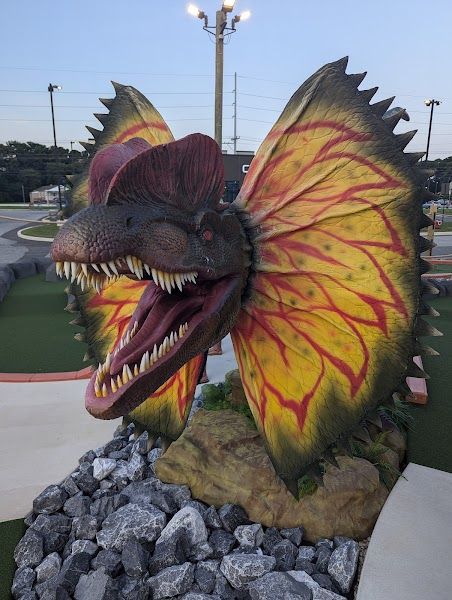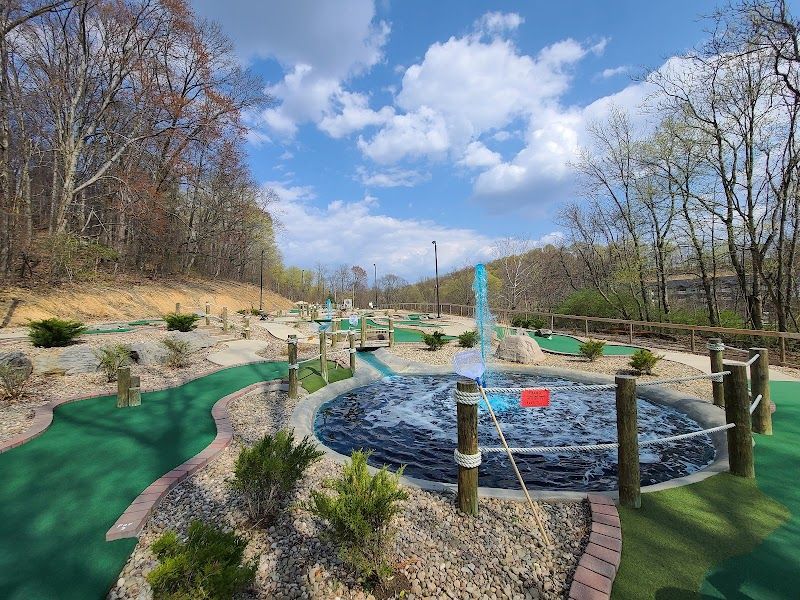Mini Golf History: From Putting Greens to Entertainment Centers

Mini Golf History: From Putting Greens to Entertainment Centers
The colorful windmills, loop-de-loops, and themed obstacles of modern mini golf courses are familiar sights across America. But how did this beloved pastime evolve from its humble beginnings to the elaborate entertainment centers we enjoy today? Let's explore the fascinating history of miniature golf.
Origins in 19th Century Scotland
The Ladies' Putting Club at St. Andrews
The origins of miniature golf can be traced back to 1867 in St. Andrews, Scotland—the famous home of golf itself. The Ladies' Putting Club of St. Andrews, affectionately known as "The Himalayas," was created as a putting-only course for women.
During the Victorian era, it was considered improper for women to take a full golf swing (which might reveal their ankles), so this putting course offered a socially acceptable way for women to participate in the sport. The Himalayas featured undulating terrain and challenging puts but none of the obstacles we associate with mini golf today.
This early putting course still exists and remains popular with visitors to St. Andrews. It represents the direct ancestor of modern miniature golf—a simplified version of golf focused entirely on the putting element.
Early American Miniature Golf (1910s-1920s)
James Barber's Thistle Dhu
In 1916, James Barber created what is often considered America's first miniature golf course at his home in Pinehurst, North Carolina. Named "Thistle Dhu" (pronounced "This'll Do") after Barber reportedly said "This'll do" upon completion, it was an elaborate garden setting with small putting greens, fountains, and beautiful landscaping.
Unlike modern courses, Thistle Dhu was designed as an elegant garden attraction rather than an amusement. It featured no windmills or obstacles—just challenging terrain and sophisticated landscaping that tested putting skills.
Garnet Carter and Tom Thumb Golf
The real commercial breakthrough came in 1927 when Garnet Carter created a miniature golf course on Lookout Mountain in Tennessee. Named "Tom Thumb Golf" after the famous diminutive figure, Carter's course introduced artificial hazards and obstacles for the first time.
Carter originally built the course as an amenity for guests at his Fairyland Inn, but it quickly became more popular than the hotel itself. By 1930, Carter had patented his design and began franchising Tom Thumb Golf courses across the country, creating the first miniature golf chain.
The Great Depression and the DIY Mini Golf Boom (1930s)
The stock market crash of 1929 and the subsequent Great Depression created an unexpected boom for miniature golf. As Americans looked for affordable entertainment, mini golf's low cost made it exceptionally popular.
Rooftop Courses in Urban Areas
In New York City alone, more than 150 rooftop miniature golf courses appeared on Manhattan buildings during this period. These urban courses made creative use of limited space and provided entertainment for city dwellers.
DIY Courses and Found Materials
Unable to afford commercial equipment, many entrepreneurial Americans built homemade courses using whatever materials they could find:
- Drainage pipes
- Old tires
- Scrap lumber
- Bricks and cinder blocks
- Barrels and boxes
These makeshift courses, often charging just 25-50 cents per round, provided both entertainment for players and crucial income for operators during difficult economic times.
Post-War Themed Course Explosion (1950s-1960s)
After World War II, the growing American middle class, automobile culture, and the development of suburban areas created perfect conditions for a mini golf renaissance.
The Birth of Novelty Obstacles
This era introduced the iconic obstacles we now associate with classic mini golf:
- Windmills with rotating blades
- Castles with drawbridges
- Dinosaurs and animals
- Loop-de-loops and ramps
- Water features and fountains
Roadside Attractions Along Highways
As Americans took to the new interstate highway system for family vacations, mini golf courses sprang up as roadside attractions. Often paired with motels, restaurants, or other amusements, these courses became popular stopping points on family road trips.
Courses began competing for attention with increasingly elaborate themes and features, beginning the trend toward more immersive experiences.
Modern Mini Golf Innovations (1970s-Present)
Adventure Golf and Elaborate Theming
Starting in the 1970s, "adventure golf" began expanding the theming beyond individual obstacles to create cohesive, immersive environments. Entire courses adopted specific themes like pirate adventures, jungle expeditions, or science fiction settings.
These highly themed environments incorporated landscaping, sound effects, lighting, and detailed props to create a narrative experience rather than just a game.
Indoor and Glow-in-the-Dark Courses
The 1980s and 1990s saw the rise of indoor courses in shopping malls and entertainment centers, making mini golf a year-round activity regardless of weather. Black light courses using fluorescent paint and special lighting effects created otherworldly environments that appealed to new generations of players.
High-Tech and Artistic Courses
The most recent evolution has seen mini golf embrace both high technology and artistic design:
- Interactive elements that respond to players
- Computer-controlled moving obstacles
- Projection mapping and digital effects
- Artist-designed holes as creative installations
- Sophisticated engineering for complex ball movements
Historical Courses You Can Still Play Today
Several historic mini golf courses have been preserved or restored, offering a chance to experience different eras of mini golf history:
The Himalayas at St. Andrews (1867)
The world's original putting course still operates in Scotland, offering a glimpse into miniature golf's earliest form.
Parkside Whispering Pines (1930)
Located in Ironton, Minnesota, this is one of America's oldest continuously operating mini golf courses, featuring many original obstacles from the 1930s.
Putt-Putt Fun Center (1954)
The original Putt-Putt course in Fayetteville, North Carolina, maintains the classic, skill-based approach that founder Don Clayton established in the 1950s.
Par-King Skill Golf (1963)
This Lincolnshire, Illinois course features preserved obstacles from the 1960s alongside newer additions, showing the evolution of mechanical obstacles over decades.
The Future of Mini Golf
Miniature golf continues to evolve in the 21st century, with new concepts including:
- Pop-up urban courses in city centers
- Adult-oriented courses with cocktail bars
- Competitive mini golf leagues and tournaments
- High-end "boutique" courses with designer obstacles
- Virtual reality enhanced putting experiences
Despite all these innovations, the fundamental appeal remains unchanged from those first putting greens in Scotland—the simple joy of attempting to guide a ball into a hole with a putter, facing amusing challenges along the way.
Experience Mini Golf History Yourself
Ready to experience different eras of mini golf history? Use our mini golf directory to find courses near you, from restored classics to cutting-edge modern attractions.
From simple putting greens to elaborate themed entertainment centers, the evolution of mini golf reflects America's changing leisure activities over more than a century—while maintaining the simple, accessible fun that has made it a beloved pastime for generations.
